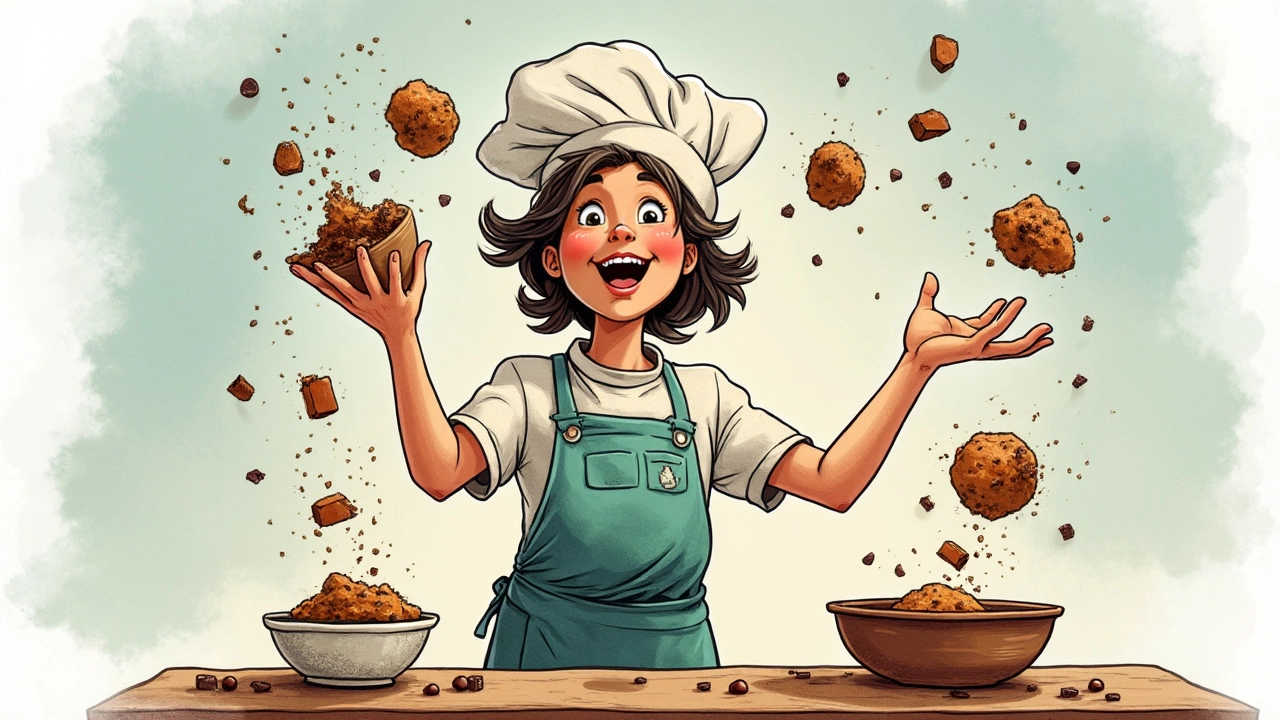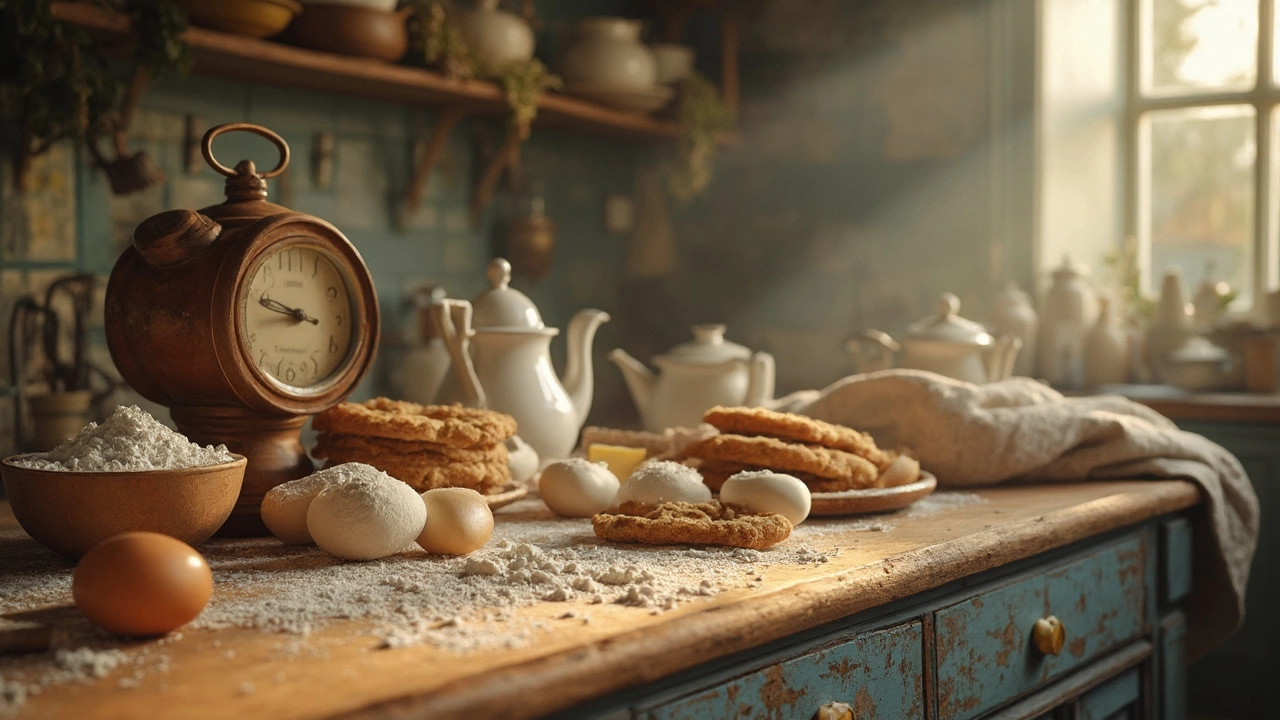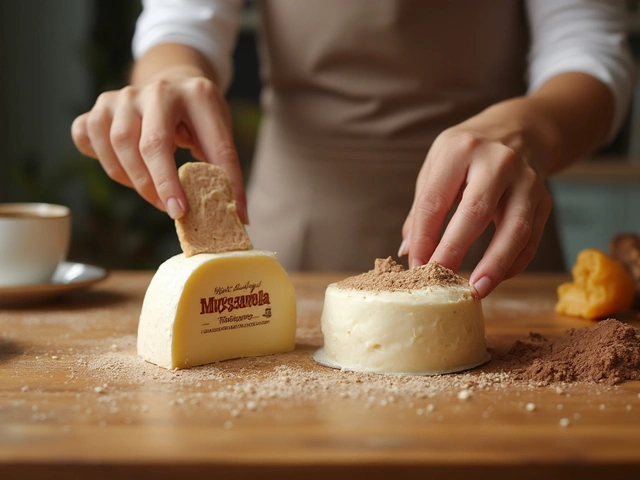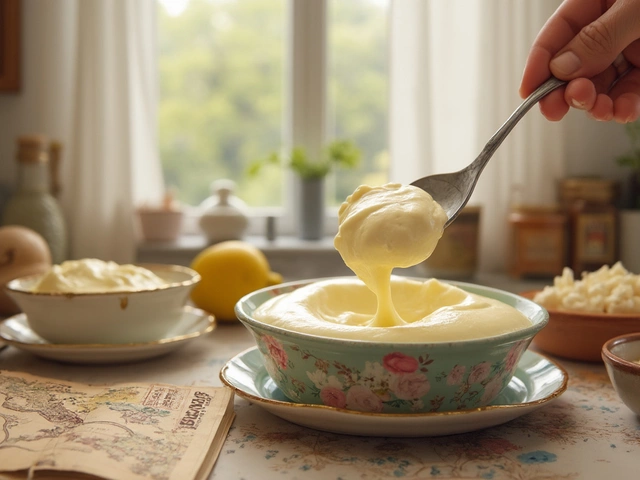Ever baked a batch of cookies hoping for them to be soft and chewy, only to find they turned out crunchier than you expected? You're not alone! Getting that perfect chewy texture involves a bit of science and some nifty tricks. Before you leap into the kitchen, let's chat about what really makes cookies chewy and how you can hit the mark every single time.
First up, it's all about the moisture. Ingredients like brown sugar, compared to white sugar, hold onto more moisture, aiding that soft chewiness you're after. Adding an extra egg yolk or using melted butter can up the chew factor too, as they bring in extra moisture and fat, both friends of soft cookies.
Timing also plays a big role. Baking your cookies a minute or two less can help them stay soft after they cool. Shorten your baking time when they're just set on the edges but still a bit soft in the middle. They'll firm up on the sheet, resulting in a chewy bliss!
- The Science Behind Cookie Texture
- Choosing the Right Ingredients
- Mixing and Baking Techniques
- Temperature Matters
- Secrets of Proper Storage
- Common Mistakes to Avoid
The Science Behind Cookie Texture
Alright, let's get geeky for a bit. Why are some cookies chewier than others? It all boils down to the balance of ingredients and the chemistry involved when they're mixed and baked. Usually, we're dealing with sugars, fats, and baking times that shape the final result.
Moisture retention is key for those soft, chewy cookies. Brown sugar is your new best buddy here because it contains molasses, which not only adds a richer flavor but also helps in locking in moisture. Compare that to white sugar, which tends to make things crispier.
Butter is another star player. Not just because it makes everything delicious, but because if you melt it before mixing, it changes how the cookie sets, often leading to a chewier texture. While we're at it, including an extra yolk is a neat trick too—yolks are all about fat, which spells softness.
Then there's the magic of baking soda versus baking powder. Baking soda spreads your cookies more, often making them thinner and chewier, while baking powder puffs them up. So, go for soda if chewiness is what you're after.
Temperature is another important factor. Baking at a slightly lower temperature keeps the cookies from getting too dry too quickly. They stay moist even after they cool down.
To give you a clearer picture:
| Ingredient | Effect on Texture |
|---|---|
| Brown Sugar | Adds moisture, makes cookies chewy |
| Melted Butter | Leads to a chewier texture |
| Baking Soda | Spreads cookies, enhances chewiness |
Pretty neat how science plays into baking your dream chewy cookies? It's like having a tasty chemistry class in your kitchen!
Choosing the Right Ingredients
When you're aiming for those perfect chewy cookies, picking the right ingredients can make all the difference between success and a crunchy disappointment. Usually, it's not about what you're using but how you use it. Let's talk about some key ingredients and how they impact your cookie's texture.
Brown Sugar vs. White Sugar: One of the easiest tweaks is to swap white sugar for brown. Brown sugar contains more moisture due to the molasses, which helps retain a softer texture. A higher ratio of brown sugar can keep those cookies delightfully chewy.
Butter Choices: Both melted butter and soft butter play roles in determining texture. Melted butter helps the dough bind together better, creating softer cookies once baked. This is actually one simple trick that changes the entire game.
Eggs and Yolks: Did you know adding an extra egg yolk can boost the chewiness factor? The yolks add extra fat and moisture, giving the dough a richer consistency and resulting in chewier cookies.
Here's a quick comparison of ingredient effects in cookie recipes:
| Ingredient | Impact on Texture |
|---|---|
| Brown Sugar | Makes cookies chewier |
| Melted Butter | Increases softness |
| Egg Yolk | Adds moisture and fat for chewiness |
Flour Variety: While most people stick to all-purpose flour, experimenting with a bit of bread flour can sometimes add chewiness due to its higher protein content. A blend can be just what you need, though too much can make things dense, so watch your measurements.
Remember, it's about balance. Mixing and matching these ingredients will help you figure out your perfect mix. Each small change can radically alter how your cookies turn out, so don't be afraid to experiment a bit to find what works best for your taste. Happy baking!
Mixing and Baking Techniques
Creating those perfect chewy cookies isn't just about throwing ingredients together and hoping for the best. There's a method to the madness, especially in how you mix and bake them. Let's dig into the nitty-gritty of making your cookie dreams come true.
Start by mixing your ingredients properly. This doesn’t mean overmixing though! You want to combine everything just until they come together. Overworking the dough can make your cookies tough, and we don’t want that. Stick to using a mixing spoon or a low-speed setting on your mixer. It keeps those glutens from turning your homemade cookies into bread.
Once you've whipped up your dough, consider chilling it in the fridge for about 30 minutes. Chilling helps control the spread of the cookies, so they stay thicker and chewier. Plus, it allows the flavors to meld, making for a more delicious bite.
Moving on to baking. Specifically, let’s talk about oven temperatures. Baking at a slightly lower temperature, like 325°F instead of 350°F, lets the cookies bake evenly. They’ll spread less and stay softer inside.
Here’s a little baking stat: cookies usually spend 8-10 minutes in the oven. However, the sweet spot for chewy cookies might be around the 8-minute mark. Keep an eye on them; when the edges look just golden brown but the centers are soft, it’s time to pull them out.
And don’t forget about cooling. Letting them rest on the baking sheet for a couple of minutes before transferring them to a cooling rack helps them set and finish cooking. It's a small step, but it makes a world of difference in achieving that chewy texture.

Temperature Matters
Temperature is like the secret agent in the world of making chewy cookies. From the moment you pull those ingredients out of your pantry, the temperature can make or break your cookie game.
Start with ingredients at the right temperature. Butter, for example, should be softened, not melted, unless the recipe says otherwise. Softened butter helps blend all ingredients smoothly, creating that perfect dough texture.
Preheating your oven matters a lot. An oven not hot enough results in your cookies spreading too much, turning out flat and not chewy. Most cookie recipes suggest baking at 350°F (175°C). This temperature keeps the outside crispy without drying out the inside, keeping them nice and chewy.
It's also important to chill your dough. Popping the dough in the fridge for at least 30 minutes before baking helps the butter solidify again, reducing spread and keeping that chewy center intact.
One hack I love is testing your oven's accuracy with an oven thermometer. Sometimes the dial isn't as precise as we think. If your oven runs hot or cool, it will throw off your baking times, so a thermometer can save your cookies!
Check out this simple comparison for how different temperatures impact cookie texture:
| Temperature | Effect |
|---|---|
| Too Low (< 325°F/163°C) | Undercooked, flat, and crunchy |
| Ideal (350°F/175°C) | Perfect balance of chewy and crisp |
| Too High (> 375°F/191°C) | Burnt edges, undercooked centers |
So, keep these tips in mind next time you're whipping up a batch! Getting that temperature just right is key to having homemade cookies that are delightfully chewy rather than unexpectedly crunchy.
Secrets of Proper Storage
Betcha didn't know how you store your cookies could make or break their chewiness over time! Yep, the way you stash these treats is just as crucial as how you bake them. Let's dig into a few storage secrets to keep your chewy cookies at their best.
First things first, moisture control is key. To keep that soft texture, you'll want to store your cookies in an airtight container. Tin or glass jars with tight seals work wonders. If you're feeling fancy, popping a slice of bread in the container with your cookies can do the trick. The bread goes stale while your cookies stay soft. Neat, right?
Temperature matters too! Room temp is usually ideal when it comes to storing cookies. But be wary of places like above the fridge or near a window where they might get warm and dry out. If you've made more cookies than you can munch through in a week (lucky you!), freezing is another option. Wrap 'em up tightly in plastic wrap or a freezer bag. When you're ready, just let them thaw at room temp before indulging.
Oh, and let’s not mix your cookie types if you can help it. Mixing crunchy and chewy ones can lead the crunchy ones to absorb moisture from the chewy ones, leaving a mushy mess. Keep them separate to maintain the intended textures.
- Use airtight containers to preserve moisture.
- Add a slice of bread to the container to keep cookies soft.
- Store at room temperature, away from heat or drafts.
- Freeze extra cookies individually wrapped, if needed.
By following these tips, those perfect homemade cookies you've crafted will stay as delicious as the day they were baked!
Common Mistakes to Avoid
Baking the perfect chewy cookies can feel a bit like a science experiment, and it's easy to slip up. But don't worry; we're here to keep you on the right track. Let's dive into some pitfalls that might be getting in your way.
First off, using too much flour is a classic blunder. It's super easy to overpack your measuring cup, especially if the flour is settled. To avoid ending up with dry, crunchy cookies, try fluffing up your flour beforehand and then spooning it into the cup before leveling it with a flat edge.
Next up, watch the clock! Overbaking is a quick ticket to crunchy-ville. If you think your cookies look a bit underdone when it's time to pull them out of the oven, perfect! They'll keep cooking on the baking sheet as they cool and give you that nice chewy center.
Oven temperature confusion is another sneaky culprit. When was the last time you checked your oven's real temp? Sometimes, what's on the dial isn't accurate. Go snag an oven thermometer and keep that guy inside to make sure you're really heating to 350°F as your recipe probably suggests.
Let's not forget about butter. Melted butter can add that luscious chewy texture. But you've got to let it cool a wee bit; if it's too hot, it can mess with your egg, leading to firmer cookies than you’d like.
Finally, don't skip the chill time. Letting your dough rest in the fridge for even just 30 minutes can really enhance the flavor and texture. It allows the flour to fully hydrate, which means your cookies will bake more evenly for that ideal chewiness.





